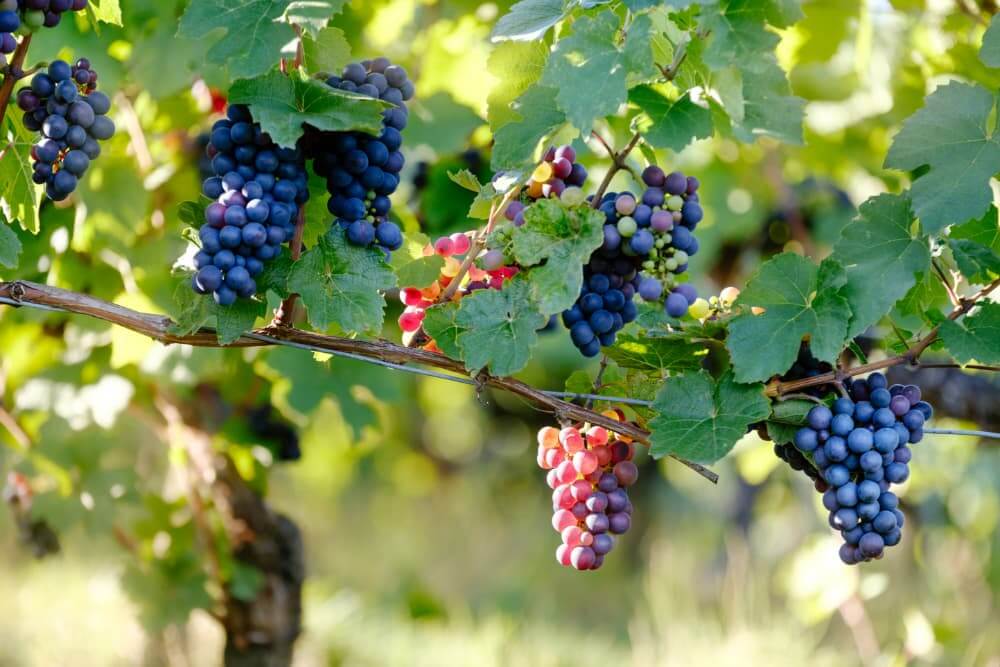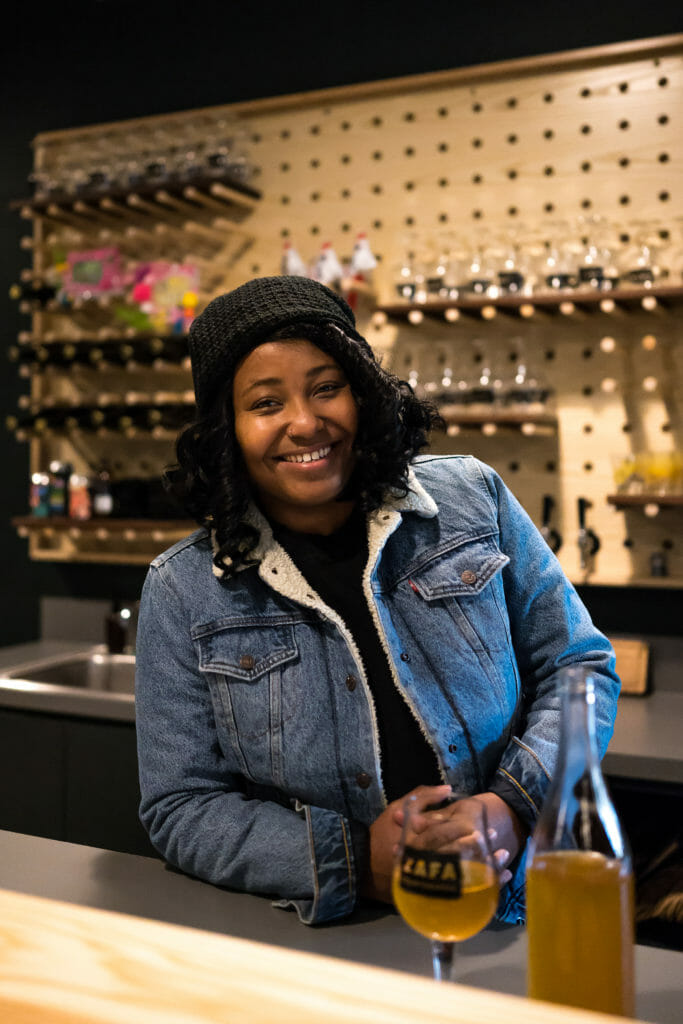Meet the Winemaker Who Left California to Grow Grapes in Vermont
Krista Scruggs uses hybrids to produce wines without additives, fertilizers, pesticides or any other chemical intervention from vine to vat.
Meet the Winemaker Who Left California to Grow Grapes in Vermont
Krista Scruggs uses hybrids to produce wines without additives, fertilizers, pesticides or any other chemical intervention from vine to vat.

Samuel Zeller

On a clip of biodynamic vineyards in Grand Isle, Vermont, farmer and winemaker Krista Scruggs is crafting wine from the soil up — in an environment once believed to reject grape-growing entirely and using the wine world’s most trendless, prestige-less natural hybrids to do so.
One of Wine Enthusiast’s Top 40 Under 40 Tastemakers of 2018, Scruggs left California to farm and ferment biodynamic bottles in a couple of vineyards that flank the rugged coast of Lake Champlain. She launched her own project, ZAFA Wines, in the fall of 2018, along with CO Cellars, a wine-cider collaboration with local apple brewers Shacksbury Cider. Beyond her crop of vines, Scruggs recently opened a Burlington-based tasting room, tucked in the nooks of a refurbished soda plant.
Like biodynamic farming, hybrid grape varietals like Marquette and La Crescent are battling a rep for being misunderstood. “Hybrids are seen as mutts,” says Scruggs, “but I’d rather have a mutt than a clone.” Crossed by hand, not by petri dish, hybrids merge vinifera (the chief source of Old World wines and table grape varietals) with wild-growing American species that are hardy enough to survive a dynamic swath of climate and landscape, explains Scruggs.
“I’m often asked, ‘How do you grow grapes in Vermont, and why?’” says Scruggs. “But these varietals are partially native. They’re built to survive here.” Half of the hybrids’ genes have existed for hundreds of years and grow wild, she continues, making them naturally resilient to many of the diseases they’re exposed to in the Green Mountain State. These grapes are inherently designed to survive better than vinifera transplants that are intended genetically for, say, southern France. “Part of the grapes’ genes are meant to be here,” she says, “so why wouldn’t we grow grapes in Vermont?”
As a biodynamic vigneron, Scruggs uses these hybrids to farm and produce wines without additives, fertilizers, pesticides or any other chemical intervention from vine to vat. Soil fertility and diversity in the vineyard’s ecosystem are paramount, so problems among the grapevines (such as an invasion of leaf-chomping Japanese beetles) require rethinking symbioses within the entire operation rather than locating a tank of insecticide. Still, biodynamic farming is not zero-intervention work; it is scientific and painstaking labor.
“You’re looking at that plant every day from January 1 to the last day of harvest,” says Scruggs. “Wine is made in the vineyard, and every decision made in the vines affects what’s made in the winery. You can’t have good wine unless you’re farming it properly.”
One might think that pruning in subzero temperatures and battling snow torrents are the hardest parts of Vermont grape farming. (Fair guess.) But, says Scruggs, it’s the humid, rain-logged summers that pose the toughest challenge. “You’ll get heavy rain and then an 80-degree day during the growing season,” she explains. “That creates an incubator for disease, which means pulling leaves every day on foot to create airflow throughout the canopy.” As a biodynamic farmer, minimizing disease involves recalculating that natural symbiosis within the vineyard’s ecosystem, not putting a Band-Aid on the issue with chemical inputs. The result may be an 80 percent crop loss one year, even though those plants are getting stronger and stronger, says Scruggs.
On Ellison Estate Vineyard in Grand Isle, among Vermont’s oldest plots of hybrid grapes, Scruggs converted 10 acres of 14-year-old vines from conventional to biodynamic in 2018. It was the vineyard’s first year of growing without synthetic pesticides. The crop was supposed to cultivate, at best, five tons of fruit, but Scruggs and her crew harvested seven tons.
“Those plants were in shock,” says Scruggs. “They could breathe. They didn’t know how to produce on their own without insecticides and herbicides, but they can now. That’s a beautiful thing. Seeing that transition? That’s why I’m a farmer.”
Vignerons get one shot at their crop and craft each year. If they’re lucky, they’ll have 40 rounds in a lifetime. Lose a plant and it takes three years to replace that vine. Scruggs is clear: There are high stakes to shoulder, but farming is the ultimate act of adaptation and collaboration. Next up, she is releasing her 2018 vintage and planting 10 more acres of biodynamic vines in Grand Isle in May.
“To make wine is to be in the vineyard, taste a grape and imagine what to do with it,” says Scruggs. “With wine, you’re telling the story of your crop. Why wouldn’t you want to have that connection, that story?”
Follow us
This work is licensed under a Creative Commons Attribution-NoDerivatives 4.0 International License.
Want to republish a Modern Farmer story?
We are happy for Modern Farmer stories to be shared, and encourage you to republish our articles for your audience. When doing so, we ask that you follow these guidelines:
Please credit us and our writers
For the author byline, please use “Author Name, Modern Farmer.” At the top of our stories, if on the web, please include this text and link: “This story was originally published by Modern Farmer.”
Please make sure to include a link back to either our home page or the article URL.
At the bottom of the story, please include the following text:
“Modern Farmer is a nonprofit initiative dedicated to raising awareness and catalyzing action at the intersection of food, agriculture, and society. Read more at <link>Modern Farmer</link>.”
Use our widget
We’d like to be able to track our stories, so we ask that if you republish our content, you do so using our widget (located on the left hand side of the article). The HTML code has a built-in tracker that tells us the data and domain where the story was published, as well as view counts.
Check the image requirements
It’s your responsibility to confirm you're licensed to republish images in our articles. Some images, such as those from commercial providers, don't allow their images to be republished without permission or payment. Copyright terms are generally listed in the image caption and attribution. You are welcome to omit our images or substitute with your own. Charts and interactive graphics follow the same rules.
Don’t change too much. Or, ask us first.
Articles must be republished in their entirety. It’s okay to change references to time (“today” to “yesterday”) or location (“Iowa City, IA” to “here”). But please keep everything else the same.
If you feel strongly that a more material edit needs to be made, get in touch with us at [email protected]. We’re happy to discuss it with the original author, but we must have prior approval for changes before publication.
Special cases
Extracts. You may run the first few lines or paragraphs of the article and then say: “Read the full article at Modern Farmer” with a link back to the original article.
Quotes. You may quote authors provided you include a link back to the article URL.
Translations. These require writer approval. To inquire about translation of a Modern Farmer article, contact us at [email protected]
Signed consent / copyright release forms. These are not required, provided you are following these guidelines.
Print. Articles can be republished in print under these same rules, with the exception that you do not need to include the links.
Tag us
When sharing the story on social media, please tag us using the following: - Twitter (@ModFarm) - Facebook (@ModernFarmerMedia) - Instagram (@modfarm)
Use our content respectfully
Modern Farmer is a nonprofit and as such we share our content for free and in good faith in order to reach new audiences. Respectfully,
No selling ads against our stories. It’s okay to put our stories on pages with ads.
Don’t republish our material wholesale, or automatically; you need to select stories to be republished individually.
You have no rights to sell, license, syndicate, or otherwise represent yourself as the authorized owner of our material to any third parties. This means that you cannot actively publish or submit our work for syndication to third party platforms or apps like Apple News or Google News. We understand that publishers cannot fully control when certain third parties automatically summarize or crawl content from publishers’ own sites.
Keep in touch
We want to hear from you if you love Modern Farmer content, have a collaboration idea, or anything else to share. As a nonprofit outlet, we work in service of our community and are always open to comments, feedback, and ideas. Contact us at [email protected].by Julia Clancy, Modern Farmer
February 4, 2019
Modern Farmer Weekly
Solutions Hub
Innovations, ideas and inspiration. Actionable solutions for a resilient food system.
ExploreExplore other topics
Share With Us
We want to hear from Modern Farmer readers who have thoughtful commentary, actionable solutions, or helpful ideas to share.
SubmitNecessary cookies are absolutely essential for the website to function properly. This category only includes cookies that ensures basic functionalities and security features of the website. These cookies do not store any personal information.
Any cookies that may not be particularly necessary for the website to function and are used specifically to collect user personal data via analytics, ads, other embedded contents are termed as non-necessary cookies.
I need to be a farmer.
Hello
So happy to find this thread!
Remarkable. Micah 4:4, kjv